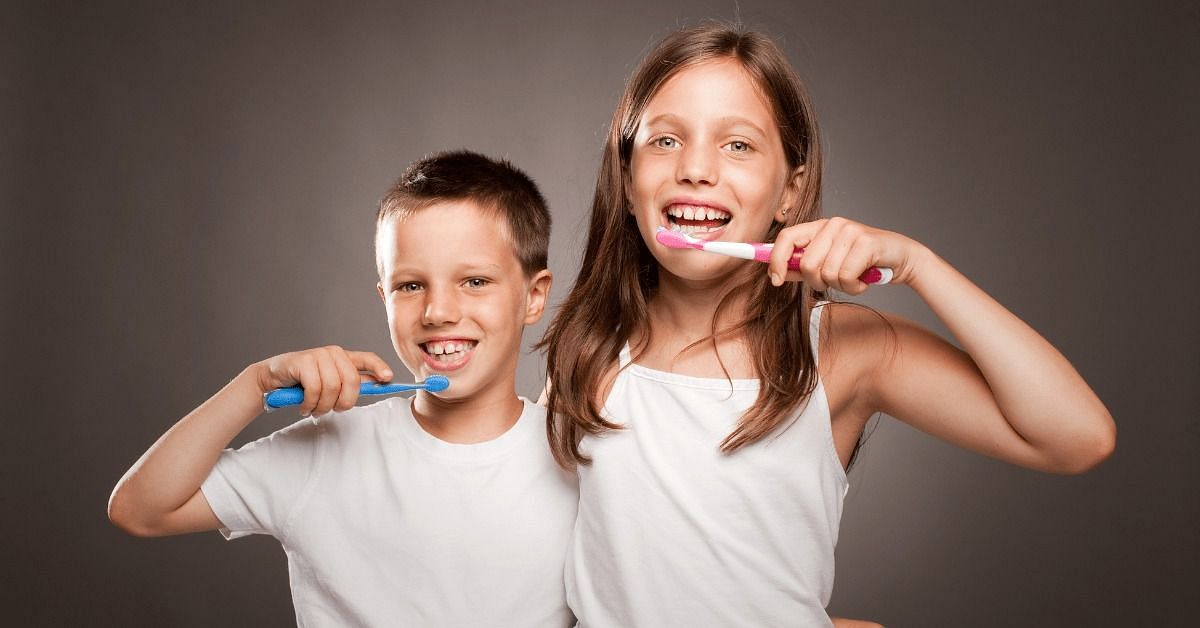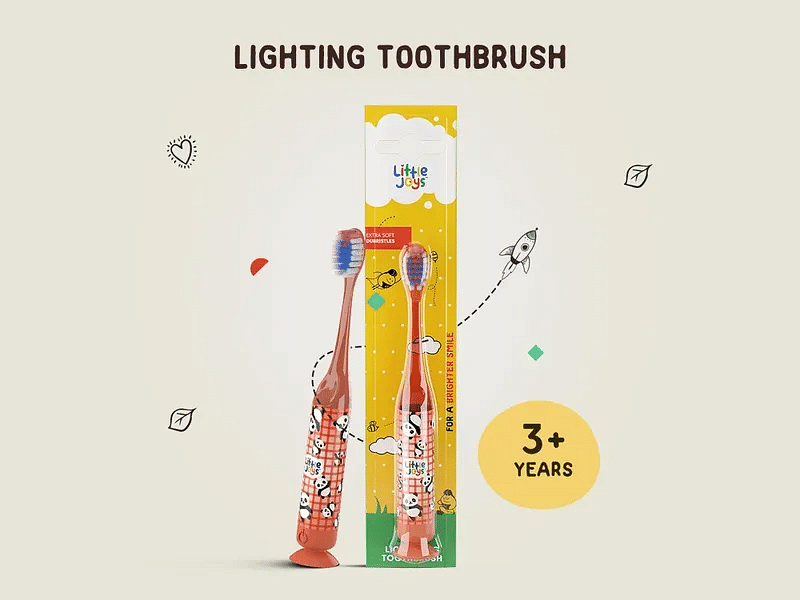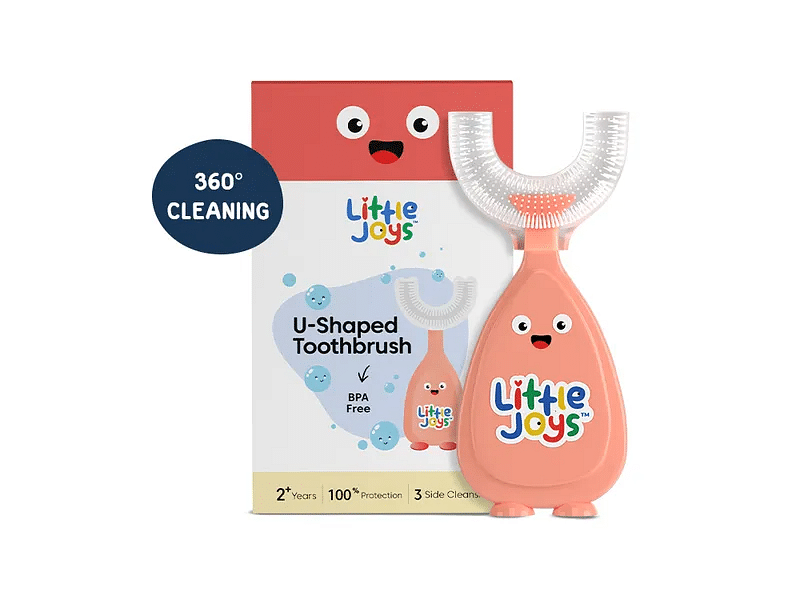What's the Difference Between Milk Teeth and Permanent Teeth?
Milk teeth develop fully by age four, whereas Permanent teeth grow from 7 to 14. Know the difference between milk teeth and permanent teeth here!

Difference Between Milk Teeth and Permanent Teeth
Dental health is an essential topic that has been gaining some attention recently. Every human experiences two kinds of teeth growth in their lifetime. The first tooth type that grows after the first six to eight months of birth is called the Milk Teeth.
The next teeth type that comes as soon as the milk teeth begin falling is called permanent teeth. Let us see the difference between milk and permanent teeth and what milk and permanent teeth are.
What Are Milk Teeth?
Milk teeth, or deciduous or baby teeth, are the first set of teeth babies develop in the first two years of their birth. By the age of four, the human baby has all 20 milk teeth developed. The milk teeth are also called primary teeth.

Fluoride Free Toothpaste
Make brushing teeth a FUN and HEALTHY activity for your child with Little Joys Fluoride-Free Toothpaste! With a delicious strawberry flavor, it'll leave a refreshing taste in your child's mouth while also removing 99.9% of germs and plaque! 🔥
Oh, it's formulated with natural ingredients like - Aloe Vera ✅Neem Oil ✅ Pomegranate ✅ Triphala ✅ to improve gum health✅and reduce the chances of cavities❌. Give your child more reasons to smile! 🌸
What Are Permanent Teeth?
Permanent teeth are the teeth that grow when milk teeth fall off. These teeth are stronger and 28 in the count. The growth in jaw size allows the space to accumulate all 28 permanent teeth.
Apart from this, there are four wisdom teeth that generally erupt in the age group of 17 to 21. However, not all of these four may erupt for every individual.
Milk Teeth Vs. Permanent Teeth
Primary or Deciduous teeth are the first set of teeth, whereas Permanent teeth are the second set after the primary teeth begin to fall off. The primary teeth are 20 in count, whereas the permanent teeth are 32 in count, including the four wisdom teeth.
The first teeth for babies are generally the front ones, top or bottom. While the first permanent teeth are the molars. Primary teeth act as a guide for the permanent teeth to be set correctly and play an important role in children learning to talk and eat.
Milk teeth have their own set of advantages, just as permanent teeth have their own. The permanent teeth are used for the normal functioning of eating hard items. Whereas milk teeth are necessary for the proper alignment of permanent teeth, speech development, etc., among small children.
Why Do We Have Two Sets of Teeth?
Having learned the difference between primary and permanent dentition, why do we need these two sets of teeth is the question. There is no discussion about which teeth set is more vital as both milk teeth and permanent teeth have their own significant roles to play.
An important reason we require two teeth sets is the difference in jaw sizes in the initial years of birth and in the later years. Unlike nail or hair growth, the teeth stay the same size once fully developed.
Hence, to accommodate the jaw size variation without hampering the normal functioning of the mouth, we need two sets of teeth.

Lighting Toothbrush
Make brushing teeth a fun and easy activity for your child with Little Joys Lighting Toothbrush! Designed to be both tough on germs and gentle on gums, this toothbrush is made with incredibly soft Dubristles that will leave your child's teeth sparkling clean 🔥
But the real magic happens when you press the brush - it lights up for exactly how long your child is supposed to brush! This builds a healthy habit in them while keeping them fascinated. So why wait? Get your child excited about brush time! 🌸
How to Take Care of Your Child’s Milk Teeth?
Taking care of milk or primary teeth is essential as these teeth pave the way clear for permanent teeth to grow. Proper care of milk teeth in the initial years also works well for good oral hygiene.
Listed here are some of the precautionary measures to take care of your child’s milk teeth.
1. Take Care of Gum Hygiene from Day One
Always ensure that your child’s gums do not have any food particles stuck on the gums for too long. Even before a child has teeth, develop a practice of wiping gums gently with a clean and warm wet cloth. This practice would keep the gums clear of any bacterial risks.
2. Ensure the Habit of Brushing Twice a Day
Brushing twice a day helps the child keep any possibilities of decay away. Once the teeth appear among infants, using an infant toothbrush for brushing should be practised. The amount of toothpaste must be just a grain-sized amount of fluoride toothpaste used twice a day.
Once the teeth fit well together, usually between the ages of two to six, the child can be taught the habit of flossing (cleaning between the gaps of teeth where bacteria usually reside) as well.
3. Keep Sugary Food and Drinks To A Minimum
As per studies, around 42% of children suffer from dental caries in their primary teeth. One of the main reasons for this is sugary or acidic drinks or food items. Soda, raisins, candy, Juice, and milk products are some food types that result in bacterial risks.
Keep such items to a minimum for children with primary teeth. Apart from this, ensure that pacifiers are kept clean and not shared among other babies as bacteria transfer through saliva.

U Shaped Toothbrush
Upgrade your child's brushing time with Little Joys U-Shaped Toothbrush! Designed in the shape of the mouth, it quickly reaches every tooth without any hassle. Made from soft silicone bristles, it cleanses your mouth without harming teeth and gums - perfect for children and their developing teeth! 😁
The easy-to-hold, non-slip handle design makes it an ideal choice for kids, while the U-shape prevents choking ❌. Give your child a healthier, safer brushing experience! 🔥
Click Here To Read Our Other Similar Blogs
References
- Charlotte W Lewis. 2020; Teeth: Small but Mighty and Mighty Important. A Comprehensive Review of Children's Dental Health for Primary Care Clinicians - https://pubmed.ncbi.nlm.nih.gov/32108010/
- Mohsen Kazeminia, Alireza Abdi, October 2020; Dental caries in primary and permanent teeth in children's worldwide, 1995 to 2019: a systematic review and meta-analysis - https://pubmed.ncbi.nlm.nih.gov/33023617/
- Periş Çelikel and Aybike Baş, November 2021; Early Childhood Caries in 4- to 5-Year-Old Children in Erzurum, Turkey - https://www.frontiersin.org/articles/10.3389/fpubh.2021.725501/full


